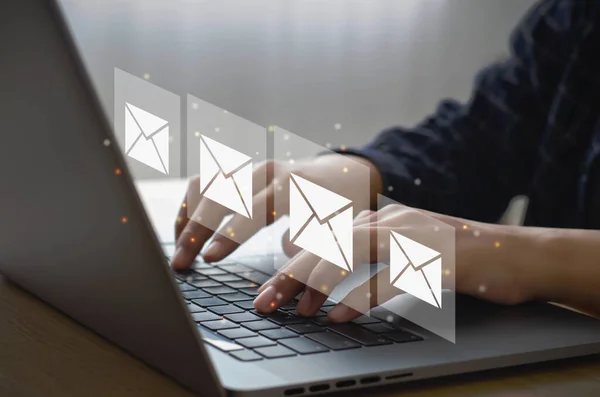What Is DMARC? Safeguarding Against Email Spoofing And Phishing
In an era where digital communication is integral to our personal and professional lives, email has become a primary means of communication. However, with the rise of cyber threats, email security has become a paramount concern. Email spoofing and phishing attacks are prevalent, exploiting vulnerabilities in the email infrastructure. Domain-based Message Authentication, Reporting, and Conformance (DMARC) is a critical tool designed to address these threats and enhance email security.
The Menace of Email Spoofing and Phishing
Email Spoofing
Email spoofing is a deceptive practice wherein attackers forge the sender's email address to appear as if it's coming from a legitimate source. This malicious technique is often used to trick recipients into divulging sensitive information, clicking on malicious links, or downloading malicious attachments.
Spoofed emails can mimic trusted entities, such as banks, government agencies, or reputable businesses. Traditional email security measures may struggle to identify these sophisticated attacks, making it imperative to adopt advanced solutions like DMARC.
Phishing Attacks
Phishing attacks involve the use of deceptive emails to trick recipients into taking harmful actions, such as clicking on malicious links or providing sensitive information like usernames and passwords. Phishing emails often impersonate trusted entities, exploiting the human factor to gain unauthorized access or compromise sensitive data.

Phishing attacks can have severe consequences, ranging from financial losses to unauthorized access to sensitive systems. DMARC plays a crucial role in preventing these attacks by providing a framework for email authentication and verification.
Understanding DMARC
DMARC is an email authentication protocol that helps organizations protect their email domains from being used for email spoofing and phishing attacks. It stands as a collaborative effort between email senders and receivers to authenticate and authorize emails.
How DMARC Works
DMARC builds on existing email authentication protocols—Sender Policy Framework (SPF) and DomainKeys Identified Mail (DKIM). It allows domain owners to publish policies indicating which authentication methods their domain uses and how receiving mail servers should handle messages that fail authentication checks.
When an email is sent, DMARC instructs the receiving mail server to check for SPF and DKIM authentication. If the email passes these checks, it is considered legitimate. If it fails, DMARC provides instructions on how to handle the failed authentication, such as marking the email as spam or rejecting it outright.
DMARC Reporting
One of DMARC's significant features is its reporting mechanism. DMARC-enabled domains can generate and receive reports that provide insights into email authentication activities. These reports help domain owners understand how their domain is being used and identify potential malicious activities, allowing them to fine-tune their email security measures.
Implementing DMARC for Enhanced Security
DMARC Policies
DMARC allows domain owners to set different policies for handling unauthenticated emails. The policies include "none," "quarantine," and "reject."
- "None": This policy provides monitoring without taking any action, allowing domain owners to assess the impact before enforcing stricter policies.
- "Quarantine": Emails that fail authentication checks may be delivered to the recipient's spam or quarantine folder, providing an intermediate level of protection.
- "Reject": The strictest policy, rejecting unauthenticated emails outright. This helps in preventing unauthorized emails from reaching the recipient's inbox.
Gradual Implementation
Implementing DMARC requires careful consideration to avoid disrupting legitimate email flows. Organizations often opt for a gradual approach, starting with a "none" policy to monitor and analyze the impact on email delivery before moving to more restrictive policies.
Benefits of DMARC Adoption

Enhanced Email Security
By implementing DMARC, organizations significantly reduce the risk of email spoofing and phishing attacks. Authentication checks ensure that only legitimate emails from authorized senders are delivered to recipients.
Brand Protection
DMARC helps protect an organization's brand reputation by preventing cybercriminals from impersonating the company in phishing attempts. This is crucial for maintaining customer trust and confidence.
Actionable Insights
DMARC reporting provides valuable insights into email authentication activities, helping organizations identify and mitigate potential threats. This data-driven approach enhances proactive cybersecurity measures.
Challenges and Considerations
Complexity of Implementation
While the benefits of DMARC adoption are substantial, the implementation process can be complex. Organizations may face challenges in configuring SPF and DKIM records, understanding reporting data, and fine-tuning policies for optimal security without disrupting legitimate email flows.
Collaboration with Third-party Services
For organizations relying on third-party email services, collaboration and coordination become crucial. Ensuring that these services align with DMARC policies is essential to maintaining a robust email security posture.
Strengthening DMARC Implementation
Continuous Monitoring and Adjustment
Implementing DMARC is not a one-time task but an ongoing process. Continuous monitoring of DMARC reports is essential to understand the authentication status of outgoing emails and detect any anomalies. Regularly reviewing these reports allows organizations to fine-tune their policies, ensuring that legitimate emails are not wrongly flagged and unauthorized ones are promptly addressed.
Education and Awareness
A crucial aspect of DMARC implementation involves educating both internal staff and external partners about the significance of DMARC and how it contributes to overall cybersecurity. Awareness programs can help users recognize potential phishing attempts, fostering a culture of vigilance and reducing the likelihood of falling victim to email-based attacks. Explore further here.
Industry Standards and DMARC Adoption
Regulatory Compliance
As cyber threats continue to rise, regulatory bodies worldwide are emphasizing the importance of robust cybersecurity measures. DMARC adoption aligns with many regulatory requirements, making it a valuable component for organizations aiming to comply with data protection and privacy regulations.
Collaboration Across Sectors
The effectiveness of DMARC is amplified when organizations collaborate across sectors. Sharing threat intelligence and best practices enhances the collective defense against evolving email-based threats. Cross-industry collaboration ensures a more comprehensive and resilient defense, particularly when facing sophisticated adversaries.

